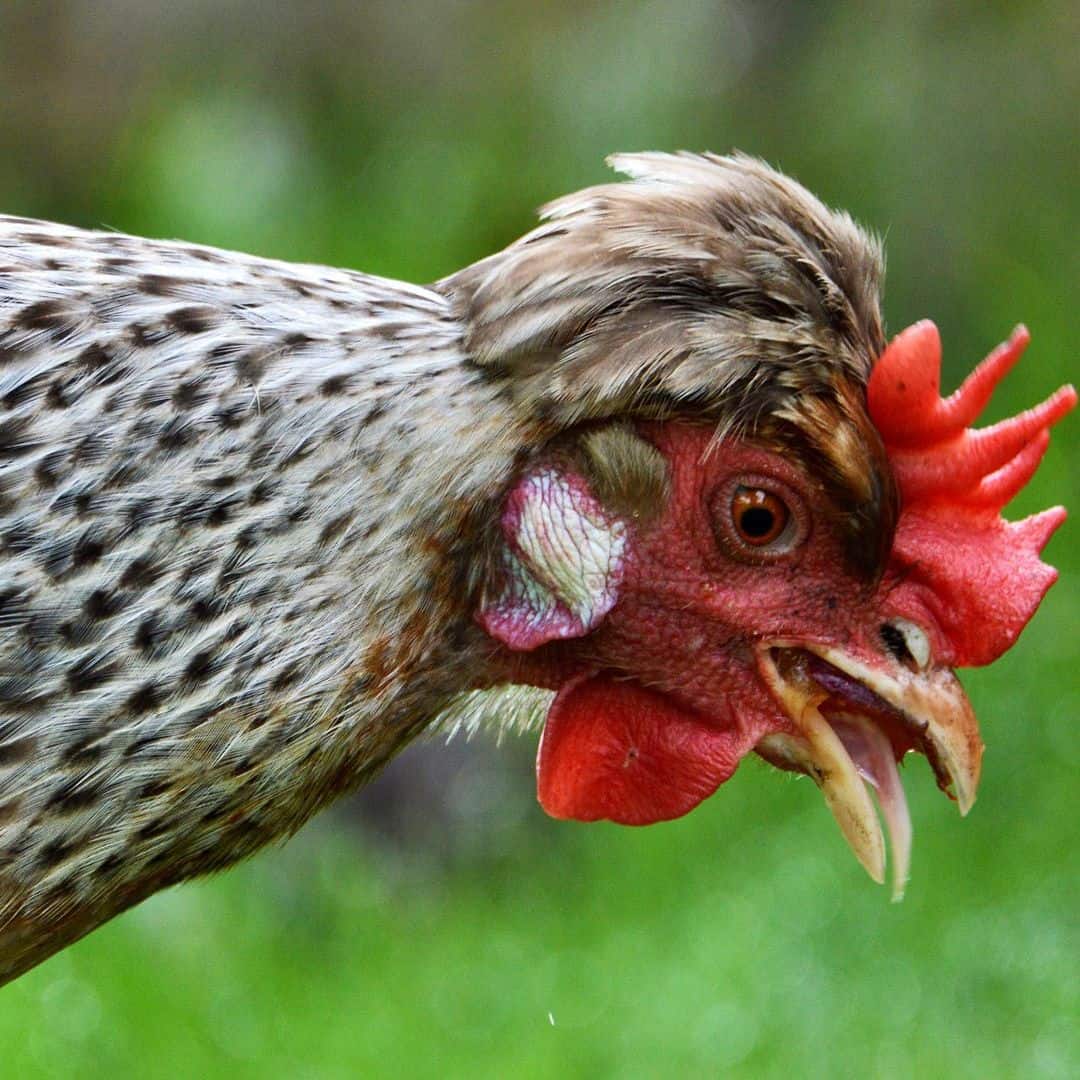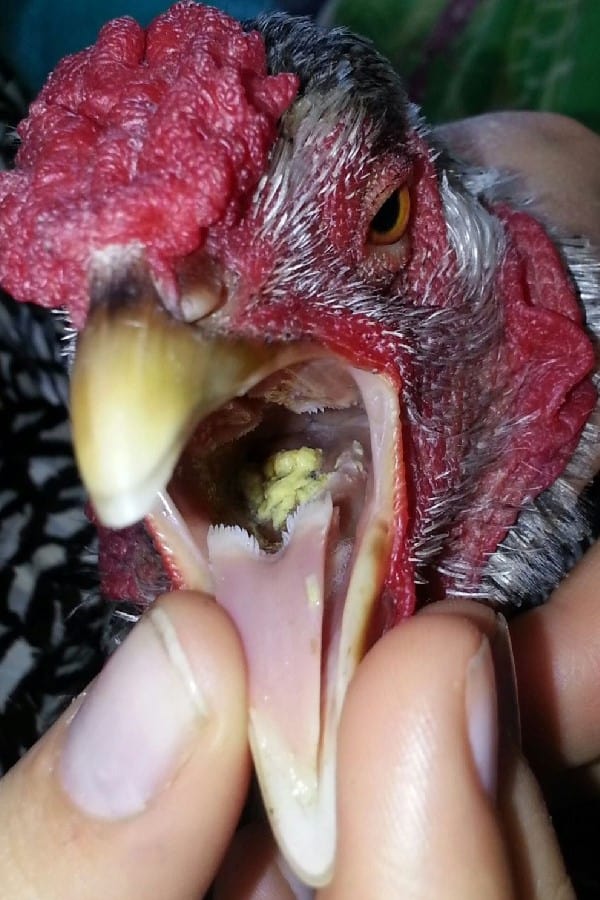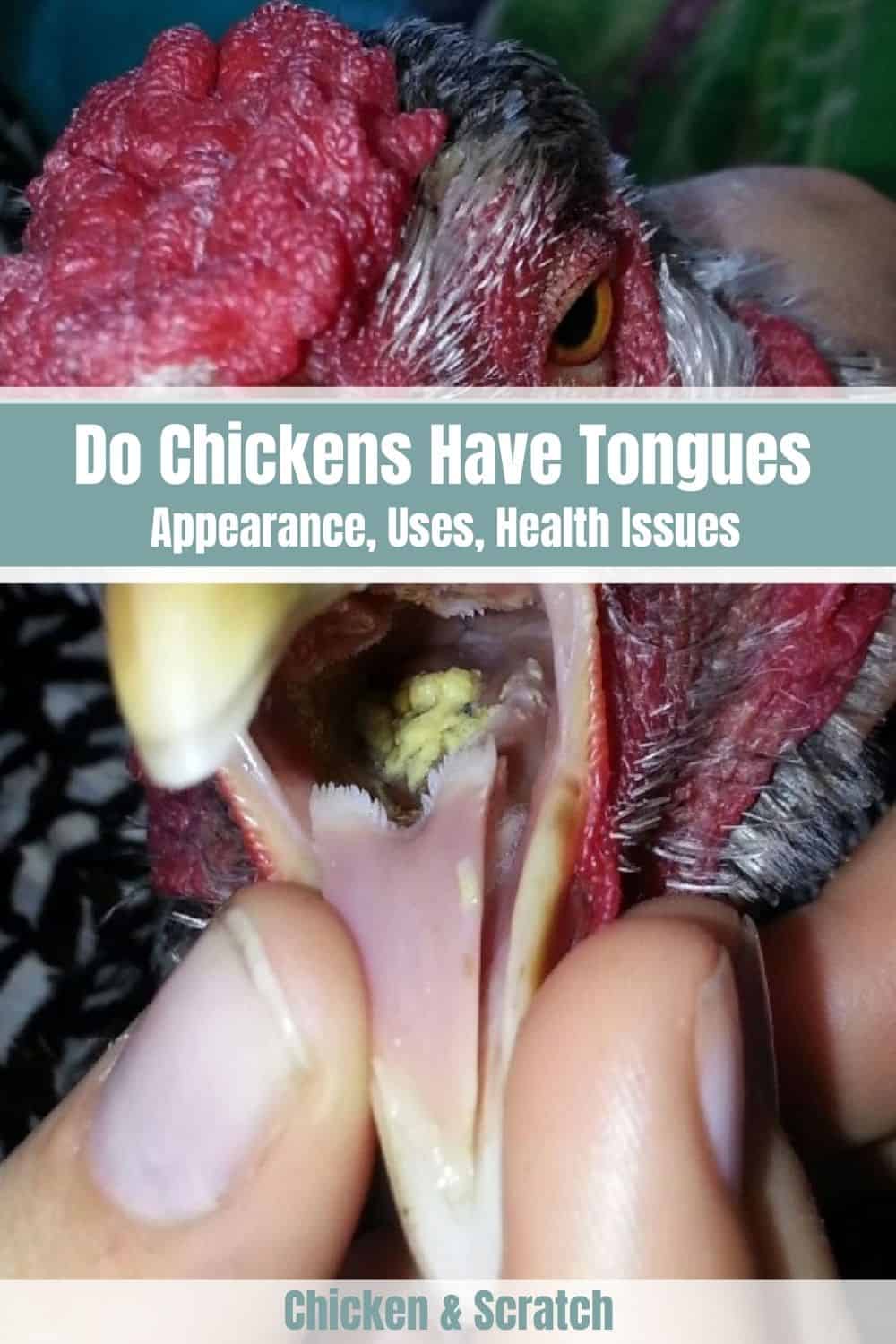Have you ever wondered if chickens have tongues? If chickens have teeth? If so, then I have the answer to your question. Chickens have tongues just like humans do, but they are much shorter. Some people say that chickens taste food with their feet, but this is not true.
The appearance of a chicken tongue

When compared to most other animals, the chicken tongue has an unusual appearance. It’s small and pointy. It is difficult to describe how the chicken tongue looks because it bears no resemblance to any other animal’s tongue.
The chicken tongue is triangular with a sharp tip that ends at the bottom of their beaks. If the chicken is dehydrated, it might stick to the bottom beak, looking like it’s a part of the beak.
Texture
The surface of the tongue has the texture of very fine sandpaper. It is covered in tiny barbs. The texture of the chicken tongue is the same as that of a cat’s tongue, which is quite rough and capable of grasping onto something exceptionally well.
Color
The tongue of a chicken is usually a pale pink color, but the color can vary from breed to breed. The rest of a chicken’s mouth is similar to other birds’ mouths in structure and function. A chicken’s tongue may be a different color than the rest of its mouth, but it almost always matches.
Size
Chickens have tiny tongues because they have small mouths. We rarely notice their tongues because they can’t stick them out like mammals and other animals do.
Even though there are diverse kinds of chickens, all have the same type of tongue and size. Their tongues are small, resembling their beaks in both size and shape.

Uses of the Chicken Tongue
Chickens can’t live without their tongues because they can’t eat or do their daily functions.
Like humans, chickens use their tongues to detect flavors, although their taste perception is different. The chicken tongue helps chickens latch on to insects and worms, helps them manage the food inside the mouth, and makes distinctive chicken noises. Taste, eating, and communicating are the three main functions of a chicken’s tongue.
Use for Tasting
The taste buds on a chicken’s tongue are similar to those on a human’s, so it can taste what it’s eating. There aren’t as many taste buds in chickens as there are in humans or some other animals. Despite this, they can still discern the edibility of their food before swallowing it.
Chickens can detect sweetness in food, but not spicy food. That’s the reason why they happily eat peppers regardless of how hot they are. As a result, while chickens do have taste buds, they aren’t critical to their survival.
Use for Eating

The tongue is an essential element of the chicken’s eating process. Their tongue is used to move the food they peck up from the ground and then push down their throats.
Chickens eat by pecking at their food, such as chicken feed scattered on the ground or worms just beneath the soil’s surface. Their beak aids in biting and picking up any food on the ground, but the tongue takes over once it is in the beak.
The tongue is essential in the manipulation of food in the chicken’s mouth. It facilitates food movement from the back of the throat, swallowed, and ends up in the gizzard, the first stomach. The tongue’s barbs help control the food in the mouth and ensure that it is all pushed back before it is swallowed.
Use for Communicating
Some birds have the ability to communicate, and they can do so with other species as well as humans. A parrot’s flexible and lengthy tongue allows it to produce a broad variety of sounds and even communicate. Unfortunately, chickens cannot verbally communicate, but they do make noises.
Although a chicken’s tongue aids in the production of some distinct sounds, it is neither versatile nor vast enough to produce a variety of noises.
On the other hand, the tongue aids a chicken’s ability to communicate with one another through noise-making.
The Chicken’s Taste Buds

Now that we have a little knowledge about the chicken’s tongue, it is safe to say that they also have taste buds, contrary to popular belief that chickens cannot taste.
The tongue of a human contains 8,000 to 10,000 taste buds. Chickens only have less with less than 350 taste buds, which is extremely low compared to humans or cows.
In humans, most taste buds are located on the tongue. In contrast, in chickens, only 2% of their taste buds can be found on the tongue. The rest is in the oral cavity.
However, even if they have fewer taste buds, they can still taste everything just like humans and other animals do. Due to their limited number of taste buds, it is a common misconception that chickens have a poor sense of taste
The number of taste buds also varies according to gender, age, and breed. Male chickens have more taste buds than female chickens.
The nail tip on the chicken’s tongue
The nail tip, which is also known as a lingual nail, is a distinctive feature of the chicken tongue. The keratinization process shapes the lingual nail. Keratin, a protein found in cells, forms the complex parts of the chicken like the nails and the feathers.
The chicken’s lingual nail aids in lifting feed and other treats. It serves as the spoon that scoops up the food from the ground and lifts it into the chicken’s beak with ease. The lingual nail makes it possible to feed the chicken more food at once and to pick up more food with less effort.
Health Issues Affecting the Chicken Tongue

Chickens, like cats, conceal signs of illness. As a result, inspecting their tongues does not reveal much about their health.
Black Tongue
If you notice your chicken developing a black tongue, this can be a sign of Niacin deficiency. However, a black tongue in chickens may also be a sign of severe respiratory disease. The blackness is caused by the dying off of the tongue’s end when the chicken is breathing through the mouth. The tip of the tongue dries out and eventually blackens.
Fowl Pox
Fowl Pox is a dreadful infection in chickens caused by a virus. It is usually spread if your flock is bitten by a bug or mosquito bite that can finish an entire flock if left untreated.
Fowl Pox manifests as pale or white swollen lesions inside a chicken’s mouth, including on the tongue. This illness also causes some black sores that may appear on other parts of the body such as the combs, wattles, or legs.
Abnormalities of the Chicken Tongue
Deformities of a chicken’s tongue are uncommon, but they do occur. In general, this deformity will coexist with other deformities, such as curved beaks. Some chicken beaks don’t fit each other. Instead, they curve in opposite directions.
Surgery to correct a distorted tongue is possible if you can find a veterinarian who is knowledgeable about chickens and the deformity is fixable.
How Chicken Tastes Food
Chickens, just like most animals, can taste almost extremely similar flavors to humans. They can taste salty, sour, and bitter flavors, but they aren’t drawn to them.
However, because they lack “sweet” taste receptors, what tastes sweet to us will not taste sweet to a chicken. They also lack a receptor for spicy foods to consume hot peppers and other plants containing capsaicin without feeling the heat.
How Chicken Drink Water
Humans and other animals drink water with their tongues. Chickens are unable to do so because the chicken’s tongues are far too small.
Chickens drink without ever using their tongue. They drink instead by rapidly raising and lowering their mouth, trapping liquids in their beak. They then swallow the water by tilting their heads back.
This drinking technique is common in birds but is less common in other animal species. It’s an extraordinary way of consuming water, and it seems to be alright for chickens.
Conclusion
Chickens do, in fact, have tongues that they use to eat. They eat, taste, and communicate with it. Contrary to popular belief, chickens can taste food despite having fewer taste buds than other animals. Their taste buds are mostly found in the oral cavity, with only a few on the surface of the tongue.


Joseph Hudson has been raising chickens for over 15 years. In 2018, he completed the Agriculture & Natural Resources program at Mt. San Antonio College. He currently raises over 1400 chickens on his 7.5-hectare farm. He keeps sharing his experience on raising healthy and happy chickens on Chicken Scratch The Foundry.







